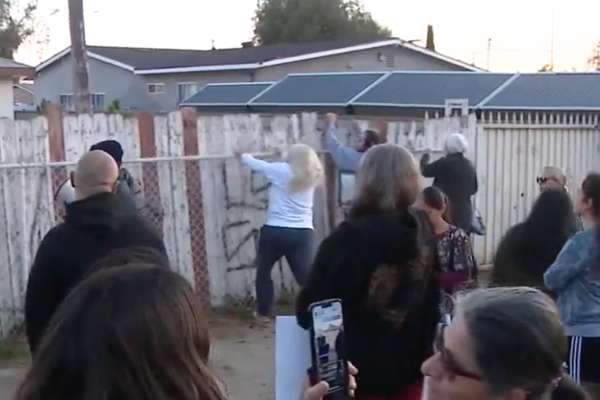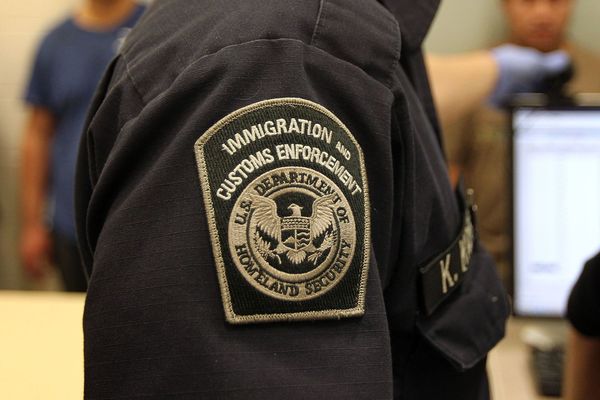
As an officer with the Council of Prison Locals, Josh Kostelnik represents federal prison employees across a wide swath of the western United States that encompass 20 correctional facilities. The Council is part of the American Federation of Government Employees, the largest union of federal workers, and within the union it has two distinct characteristics. Prison workers are the most organized, with 90% of the members electing to pay dues. And they lean conservative.
“Half of my board and many local presidents supported Trump,” said Kostelnik. “We’re law enforcement, after all. That’s why so many have reached out to me with buyer’s remorse. They did not anticipate a full-blown attack against us.”
The spear of the attack landed in March, when Trump signed an executive order to strip collective bargaining rights for most federal employees, including at prisons. The fallout was immediate. The Bureau of Prisons (BOP) stopped deducting union dues from paychecks and the number of dues-paying members in Kolstenik’s region dropped from 3,500 to 100. (It has since climbed back to 1,000 thanks to the union’s adoption of a platform that allows it to collect membership dues directly.) Pending unfair labor complaints lodged by the union have stalled. And that’s in addition to recent pay cuts of up to 25% for Kolstenik’s members and the new budget passed by the U.S. House of Representatives that threatens their retirement benefits. “When I tell people why they should work for BOP, I‘m running out of reasons,” said Kolstenik.
Trump campaigned on fighting for the working class, and exit polls found that he won 56% of the blue-collar vote, defined as voters without a college degree, while making gains among working-class Black and Latino voters. Shortly after the election, Trump nominated Lori Chavez-DeRemer, a pro-union Republican, for labor secretary. On Inauguration Day, Trump promised his administration would “protect American workers.”
Yet 100 days into Trump’s second term, many workers, including the more than 30,000 federal prison employees, are feeling more vulnerable than ever — if they’re lucky enough to still have a job. The administration has fired tens of thousands of federal workers, stripped a million more of collective bargaining rights, axed higher minimum wage requirements and gutted programs and agencies that enforce labor and safety standards and protect workers’ rights to organize.
“This regime of billionaires has launched an all-out assault on working people,” said Lee Saunders, president of the American Federation of State, County & Municipal Employees (AFSCME), which has joined the American Federation of Government Employees in lawsuits to block a number of Trump’s executive orders. “They’ve brought to a halt the very agencies that help workers negotiate strong contracts, investigate unfair labor practices and hold employers accountable.”
A key federal agency for workers is the National Labor Relations Board, responsible for protecting employees’ right to organize. In January, Trump fired NLRB board member Gwynne Wilcox, leaving the independent agency without a quorum and thus unable to issue decisions or make rules. Trump’s unprecedented firing of Wilcox — whose term isn’t set to conclude until 2028 — is consistent with the administration’s expansive assertion of executive power. (Wilcox quickly filed a lawsuit to challenge her firing; the Supreme Court is now reviewing the case.)
Paralysis at the National Labor Relations Board has left thousands of workers who are seeking to unionize in the lurch. Signaling the new direction of the NLRB, Trump has nominated Crystal Carey to serve as the agency’s general counsel. Carey is currently a lawyer with Morgan Lewis, a prominent anti-union firm that is arguing, while defending Amazon and Tesla against labor charges, that the NLRB itself is unconstitutional.
“Anyone that Trump appoints should be expected to rule for employers over workers,” said Margaret Poydock, a senior policy analyst at the Economic Policy Institute, a nonpartisan think tank. “That completely destroys the independence of the agency, an agency that is meant to protect workers’ organizing and bargaining rights.”
The fight over the National Labor Relations Board, which raises fundamental questions about executive power, has received its fair share of media coverage. Other changes are easier to miss. In March, Trump rescinded an executive order issued by President Joe Biden that raised the minimum wage for federal contractors to $15 an hour and was indexed to inflation, with the current minimum set at $17.75. The Economic Policy Institute estimated that the move had raised the wages for nearly 400,000 workers — a gain that Trump has now moved to erase.
Trump has also hollowed out agencies and programs that protect workers from physical harm, harassment and discrimination. In April, cuts to the National Institute for Occupational Safety and Health, or NIOSH, which researches workplace hazards, led to a workforce reduction of more than 90%. In a move advertised as a crackdown on diversity, equity and inclusion policies, Trump signed an order in January that reversed a rule requiring federal contractors to prevent workplace discrimination and, in response, the Department of Labor ordered the Office of the Federal Contract Compliance Programs (OFCCP) to stop pursuing cases.
One of the last press releases from the OFCCP, under Biden, announced that after an investigation, Ryan Companies, a construction company operating in Des Moines, had agreed to pay $350,000 to resolve sexual harassment complaints. The Des Moines Register followed up, revealing that OFCCP investigators had found “severe and pervasive” harassment. One woman reported that she was sexually harassed more than 100 times and threatened with firing when she complained. The paper noted that, with Trump’s order, it wasn’t clear the company would be paying anything after all.
In his pitch to working-class Americans, Trump promised “on day one” to bring down food prices, and he has launched and then paused a series of dizzying tariffs he contends will spark a domestic manufacturing boom. Grocery prices, however, have continued to rise, and most economists expect the tariffs that remain to drive increased inflation. Early data indicates that manufacturing growth has slowed, though a number of companies, including Apple and Johnson & Johnson, have recently announced major new manufacturing investments. In early April, J.P. Morgan raised the likelihood of a recession to 60% and has maintained that forecast, even after Trump suspended some tariffs.
Some unions, like the North American Building Trades Union and the United Auto Workers, have been open to targeted tariffs but criticize Trump’s approach. “We do not support reckless tariffs on all countries at crazy rates,” UAW President Shawn Fain told a gathering of members earlier this month.
The most sustained attack has been, of course, on federal workers. “We want the bureaucrats to be traumatically affected,” Russell Voight, a key architect of Project 2025, explained in 2023. Voight is now Trump’s director of the Office of Management and Budget and has pushed to make it easier to fire federal workers. “When they wake up in the morning, we want them to not want to go to work because they are increasingly viewed as the villains.”
Naomi Anderson never felt like a villain. The 31-year-old had been with the United States Department of Agriculture for two years. She’s helped to support agricultural industries abroad that could serve as trading partners with the United States, worked with trout fisheries in the country of Georgia and female farmers in Kenya, while also identifying famine risks elsewhere. “I felt my work was impactful,” she said. And she was good at it: In the last year, she had racked up seven performance awards, the most in her division. President Trump’s hiring freeze, however, meant her term couldn’t be renewed. She spoke to Capital & Main on April 22, her last day of work.
Anderson, a mother of two boys, was on maternity leave when she lost her job. She has been an active member of AFSCME Local 3976, and has kept abreast of the union’s fight to preserve jobs and remained in contact with coworkers while home with her newborn. “Lots of people with tons of experience are gone,” she said. And some that remain, she added, have almost nothing to do because the administration issued stop work orders related to foreign aid. “None of this is efficient,” she said. Without a job, her family is considering a move out of the Washington, D.C., area.
Down in Louisiana, Corey Trammel is equally frustrated. He’s worked at the Oakdale Federal Correctional Institution for more than 20 years and is president of Local 3957 of AFGE. “Down here in these woods, everybody was a big supporter of Trump,” he said. As with federal prison workers elsewhere, Trump’s move to disband the union has been met with disbelief.
Trammel, a registered Republican who declined to state whom he voted for, said that while some co-workers are panicking, they are still holding out hope that Trump is going to do the right thing and support them. Trammel scoffed. “I’m like, ‘Y’all need to wake up.’”







